Jean-louis Dessalles - Publications [See all papers] - [Selected Papers] - [Talks]
See also Books:
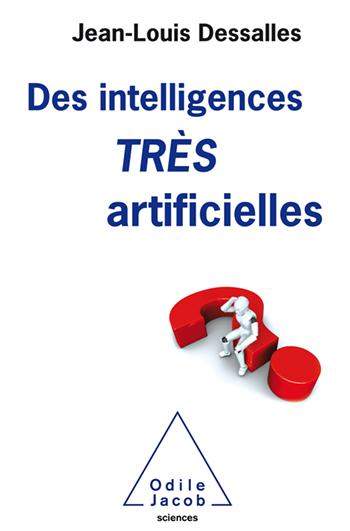
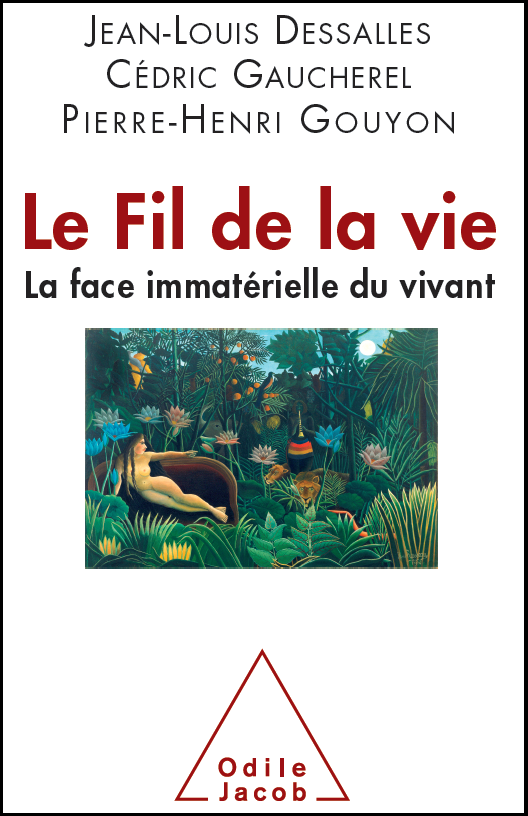
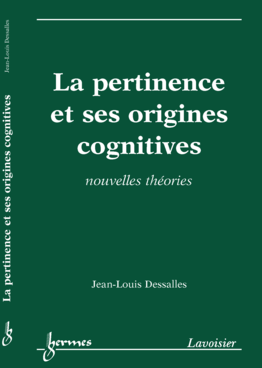
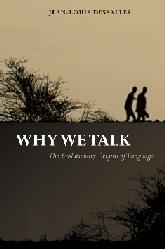

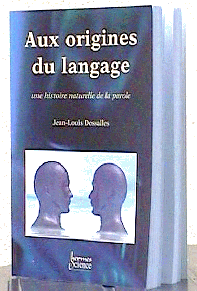

 Topics
Topics
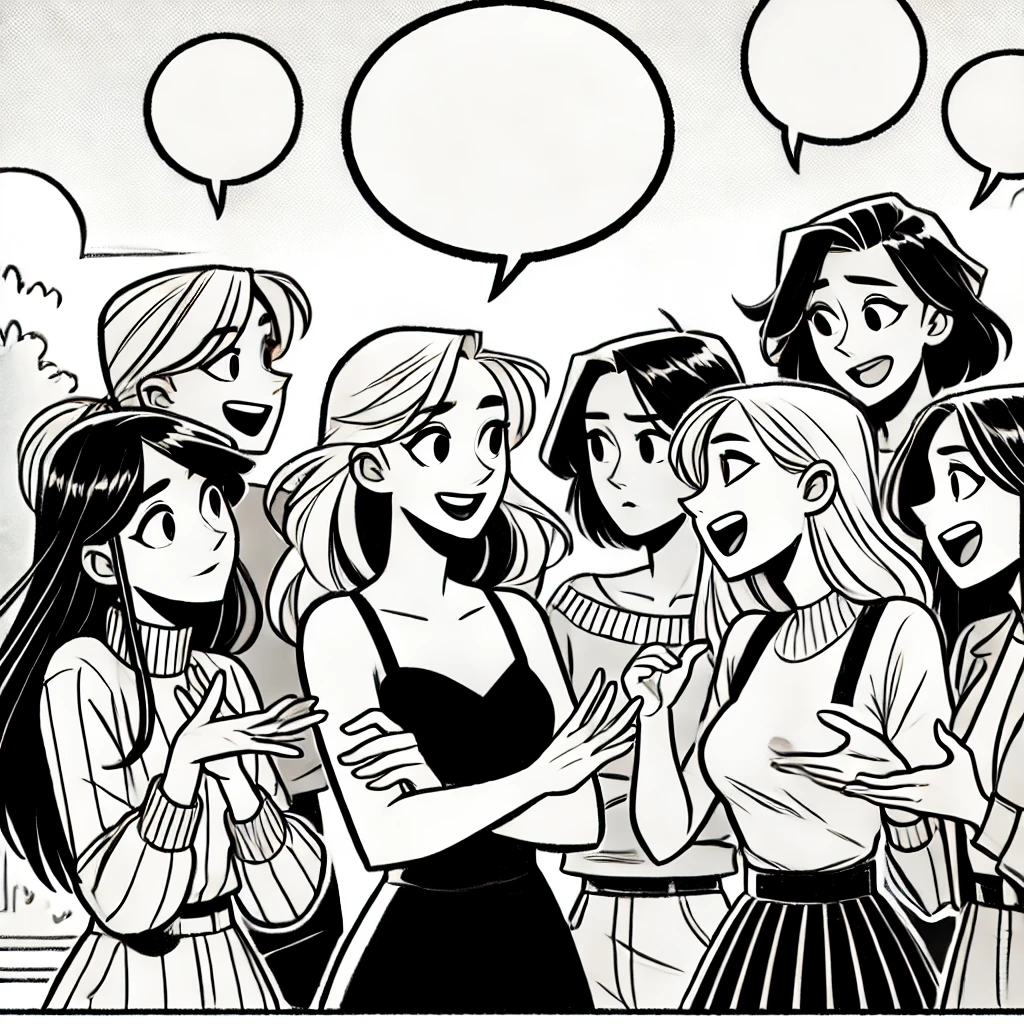 Social signals
Social signals
Evolutionary origins of language
Evolution and information
Simplicity Theory
Cognitive modelling of interest
Cognitive modelling of relevance
Cognitive modelling of meaning
Cognitive modelling of emotional intensity
Cognitive modelling of concept learning
Emergence as complexity drop
Qualia cannot be epiphenomenal
→ [ See all papers ] → [ Selected papers ]
Selected topic: Cognitive modelling of interest
| Between 25% and 40% of conversation time is devoted to narratives.
I developed a model of narrative relevance, based on cognitive simplicity.
Interesting topics correspond to a cognitive complexity drop. Complexity drop predicts how much a topic will appear unexpected. Emotional intensity is also an essential ingredient of interestingness that is controlled by complexity drop as well.Modelling interest in narratives led me to develop Simplicity Theory. |
My 24 papers about NARRATIVE (but see my other papers)
-
Dessalles, J.-L. (2018). Remembered events are unexpected (Commentary on Mahr & Csibra: Why do we remember? The communicative function of
episodic memory). Behavioral and Brain Sciences, 41, 22.
Keywords: NARRATIVE
We remember a small proportion of our experiences as events. Are these events selected because they are useful and can be proven true, or rather because they are unexpected?
→ Download PDF Share: -
Dessalles, J.-L. (2017). Conversational topic connectedness predicted by Simplicity Theory. In G. Gunzelmann, A. Howes, T. Tenbrink & E. Davelaar (Eds.), Proceedings of the 39th Annual Conference of the Cognitive Science Society, 1914-1919. Austin, TX: Cognitive Science Society.
Keywords: SIMPLICITY NARRATIVE
People avoid changing subject abruptly during conversation. There are reasons to think that this constraint is more than a social convention and is deeply rooted in our cognition. We show here that the phenomenon of topic connectedness is an expected consequence of the maximization of unexpectedness and that it is predicted by Simplicity Theory.
→ Download PDF Share: -
Dessalles, J.-L. (2016). Narration and reasoning, from structure to biological function. In A. Rocci & L. de Saussure (Eds.), Handbook of communication science, 205-223. Berlin: De Gruyter Mouton.
Keywords: ARGUMENTATION NARRATIVE
Human conversation has a particular structure that bears no resemblance with any other known communication system. People’s spontaneous talking comes in two forms: narratives and collective argumentative reasoning. This characteristic conversational structure cannot be fortuitous. Conversation is a costly behaviour, if only by the time and energy it demands. Surprisingly, there have been few attempts to relate conversational structure to any biological function it may have. This chapter illustrates conversational structure with examples and explores the issue of its biological purpose.
→ Download PDF Share: -
Dessalles, J.-L. (2015). L’imaginaire de la narration : une approche cognitive. In P. Musso, S. Coiffier & J.-F. Lucas (Eds.), Pour innover, modéliser l’imaginaire - Regards croisés d’industriels et de chercheurs, 154-167. Paris: Editions Manucius.
Keywords: NARRATIVE SIMPLICITY
Quelles sont les propriétés dont doit jouir une histoire pour être une histoire ? Il est possible de répondre à cette question en se plaçant dans le cadre de la modélisation cognitive. La notion centrale développée ici est celle de simplicité cachée. Pour être intéressante, une situation imaginaire doit comporter une « révélation » qui simplifie une situation perçue comme complexe. Ce cadre conceptuel peut avoir des retombées qui débordent le domaine de la production narrative. Il concerne potentiellement toute création de l’esprit censée intéresser autrui. Ceci inclut les récits, mais aussi les objets ou les projets, dès lors que ces objets ou ces projets se voient dotés d’une valeur narrative.
→ Télécharger une version PDF de cet article Share: -
Saillenfest, A. & Dessalles, J.-L. (2014). A cognitive approach to narrative planning with believable characters. In M. A. Finlayson, J. C. Meister & E. G. Bruneau (Eds.), 2014 Workshop on Computational Models of Narrative - OASIcs vol. 41, 177-181. Dagstuhl, Germany: .
Keywords: NARRATIVE
→ Download PDF Share: -
Saillenfest, A. & Dessalles, J.-L. (2014). Can Believable Characters Act Unexpectedly? Literary & Linguistic Computing, 29 (4), 606-620.
Keywords: NARRATIVE SIMPLICITY
Unexpectedness is a major factor controlling interest in narratives. Emotions, for instance, are felt intensely if they are associated with unexpected events. The problem with generating unexpected situations is that either characters, or the whole story, are at risk of being no longer believable. This issue is one of the main problems that make story design a hard task. Writers face it on a case by case basis. The automatic generation of interesting stories requires formal criteria to decide to what extent a given situation is unexpected and to what extent actions are kept believable. This paper proposes such formal criteria and makes suggestions concerning their use in story generation systems.
→ Download PDF Share: -
Saillenfest, A. & Dessalles, J.-L. (2013). Using unexpected simplicity to control moral judgments and interest in narratives. In M. A. Finlayson, B. Fisseni, B. Löwe & J. C. Meister (Eds.), 2013 Workshop on Computational Models of Narrative - OASIcs vol. 32, 214-227. Saarbrücken, Germany: .
Keywords: NARRATIVE SIMPLICITY
The challenge of narrative automatic generation is to produce not only coherent, but interesting stories. This study considers the problem within the Simplicity Theory framework. According to this theory, interesting situations must be unexpectedly simple, either because they should have required complex circumstances to be produced, or because they are abnormally simple, as in coincidences. Here we consider the special case of narratives in which characters perform actions with emotional consequences. We show, using the simplicity framework, how notions such as intentions, believability, responsibility and moral judgments are linked to narrative interest.
→ Download PDF Share: -
Dessalles, J.-L. (2013). Algorithmic simplicity and relevance. In D. L. Dowe (Ed.), Algorithmic probability and friends - LNAI 7070, 119-130. Berlin, D: Springer Verlag.
Keywords: SIMPLICITY NARRATIVE
The human mind is known to be sensitive to complexity. For instance, the visual system reconstructs hidden parts of objects following a principle of maximum simplicity. We suggest here that higher cognitive processes, such as the selection of relevant situations, are sensitive to variations of complexity. Situations are relevant to human beings when they appear simpler to describe than to generate. This definition offers a predictive (i.e. refutable) model for the selection of situations worth reporting (interestingness) and for what individuals consider an appropriate move in conversation.
→ Download PDF Share: -
Saillenfest, A. & Dessalles, J.-L. (2012). Role of kolmogorov complexity on interest in moral dilemma stories. In N. Miyake, D. Peebles & R. Cooper (Eds.), Proceedings of the 34th Annual Conference of the Cognitive Science Society, 947-952. Austin, TX: Cognitive Science Society.
Keywords: NARRATIVE SIMPLICITY
Several studies have highlighted the combined role of emotions and reasoning in the determination of judgments about morality. Here we explore the influence of Kolmogorov complexity in the determination, not only of moral judgment, but also of the associated narrative interest. We designed an experiment to test the predictions of our complexity-based model when applied to moral dilemmas. It confirms that judgments about interest and morality may be explained in part by discrepancies in complexity. This preliminary study suggests that cognitive computations are involved in decision-making about emotional outcomes.
→ Download PDF Share: -
Dessalles, J.-L. (2011). Parler pour exister. Sciences humaines, 224, 45-47.
Keywords: NARRATIVE EVOL.&LANG.
Le langage ne vise pas seulement à transmettre des informations utiles. Il sert aussi à se mettre en valeur en racontant de bonnes histoires qui doivent répondre à des caractéristiques très précises.
→ Télécharger une version PDF de cet article Share: -
Dessalles, J.-L. (2011). Sharing cognitive dissonance as a way to reach social harmony. Social Science Information, 50 (1), 116-127.
Keywords: NARRATIVE ARGUMENTATION
Commonsense wisdom dictates that mutual understanding grows with cognitive harmony. Communication seems impossible between people who do not share values, beliefs and concerns. If brought to the extreme, this statement however neglects the fact that the formation of social bonds crucially depends on the expression of cognitive dissonance.
→ Download PDF Share: -
Dessalles, J.-L. (2009). Où est mon information ? Telecom, 154, 57-60.
Keywords: NARRATIVE
Le prix de certaines informations est devenu négatif : nous sommes prêts à payer pour ne pas recevoir la plupart des messages qui assaillent nos boîtes électroniques. À l’inverse, le coût de l’information pertinente, ou le temps nécessaire pour la trouver, risque d’augmenter indéfiniment. Pourrons-nous échapper à cette malédiction ?
→ Télécharger une version PDF de cet article Share: -
Dimulescu, A. & Dessalles, J.-L. (2009). Understanding narrative interest: Some evidence on the role of unexpectedness. In N. A. Taatgen & H. van Rijn (Eds.), Proceedings of the 31st Annual Conference of the Cognitive Science Society, 1734-1739. Amsterdam, NL: Cognitive Science Society.
Keywords: NARRATIVE SIMPLICITY
This study is an attempt to measure the variations of interest aroused by conversational narratives when definite dimensions of the reported events are manipulated. The results are compared with the predictions of the Complexity Drop Theory, which states that events are more interesting when they appear simpler, in the Kolmogorov sense, than anticipated.
→ Download PDF Share: -
Dimulescu, A. & Dessalles, J.-L. (2009). Prédire l’intérêt dans la communication événementielle. In N. Maudet, P.-Y. Schobbens & M. Guyomard (Eds.), Modèles formels de l’interaction (MFI-09) - Actes des cinquièmes journées francophones, 125-134. Lannion: .
Keywords: NARRATIVE SIMPLICITY
Cette étude vise à mesurer les variations de l’intérêt suscitées par un événement lorsque certaines dimensions définies sont manipulées. Les résultats sont comparés aux prédictions de la théorie du décalage de complexité, selon laquelle les événements sont d’autant plus intéressants qu’ils sont plus simples qu’attendu.
→ Télécharger une version PDF de cet article Share: -
Dessalles, J.-L. (2008). Spontaneous narrative behaviour in homo sapiens: how does it benefit to speakers? In A. D. M. Smith, K. Smith & R. Ferrer i Cancho (Eds.), The evolution of language - Proceedings of the 7th International Conference (Evolang7 - Barcelona), 91-98. Singapore: World Scientific.
Keywords: EVOL.&LANG. NARRATIVE
The fact that human beings universally put much energy and conviction in reporting events in daily conversations demands an explanation. After having observed that the selection of reportable events is based on unexpectedness and emotion, we make a few suggestions to show how the existence of narrative behaviour can be consistent with the socio-political theory of the origin of language.
→ Download PDF Share: -
Dessalles, J.-L. (2007). Complexité cognitive appliquée à la modélisation de l’intérêt narratif. Intellectica, 45 (1), 145-165.
Keywords: SIMPLICITY NARRATIVE
Nous définissons la complexité cognitive comme une notion dérivée de la complexité de Kolmogorov. Nous montrons qu’une partie importante de ce qui retient l’intérêt des êtres humains, notamment lors de la sélection des événements spontanément signalés ou rapportés, peut être prédite par un saut de complexité cognitive. Nous évaluons les conséquences de ce modèle pour l’étude de la pertinence conversationnelle.
→ Télécharger une version PDF de cet article Share: -
Dessalles, J.-L. (2007). Storing events to retell them (Commentary on Suddendorf and Corballis: "The evolution of foresight"). Behavioral and Brain Sciences, 30 (3), 321-322.
Keywords: NARRATIVE
Episodic memory is certainly a unique endowment, but its primary purpose is something other than to provide raw material for creative synthesis of future scenarios. Remembered episodes are exactly those which are worth telling. The function of episodic memory, in our view, is to accumulate stories that are relevant to recount in conversation.
→ Download PDF Share: -
Dessalles, J.-L. (2006). Intérêt conversationnel et complexité : le rôle de l’inattendu dans la communication spontanée. Psychologie de l’Interaction, , 259-281.
Keywords: SIMPLICITY NARRATIVE
La conversation humaine agit comme un filtre extraordinairement sélectif : seule une infime partie des situations que les locuteurs ont vécues ou ont pu connaître sera jugée digne d’être rapportée aux interlocuteurs. L’un des objectifs de la recherche sur le langage consiste à rechercher des critères permettant de prévoir si une situation sera perçue comme suffisamment « intéressante » si elle est mentionnée en conversation. Nous montrons ici que le caractère inattendu de certaines situations, qui conduit souvent à ce qu’elles soient rapportées en conversation, est lié à des écarts de complexité, et que ce phénomène peut s’expliquer dans le cadre plus général de la théorie « shannonienne » de la communication événementielle.
→ Télécharger une version PDF de cet article Share: -
Dessalles, J.-L. (2006). Trivialization behaviour in conversation. Proceedings of the 2nd Conference on Language, Culture and Mind, 44-46. Paris: Ecole Nationale Supérieure des Télécommunications.
Keywords: NARRATIVE
Spontaneous conversations involve a considerable amount of event reporting. Eggins and Slade (1997:265) observed that storytelling alone filled up to 43% of the three hour corpus of casual conversation they collected. In our corpus of family conversations, they may constitute from one third to two thirds of spoken time. One remarkable phenomenon about conversational stories is that they most often concern unexpected states of affairs, or states of affairs that are presented as such. Another, no less remarkable, phenomenon is that individuals quite often tend to diminish the originality of others’ stories. We wall such reactions trivialization.
→ Download PDF Share: -
Dessalles, J.-L. (2005). Vers une modélisation de l’intérêt. In A. Herzig, Y. Lespérance & A.-I. Mouaddib (Eds.), Actes des troisièmes journées francophones ‘Modèles formels de l’interaction’ (MFI-05), 113-122. Toulouse: Cépaduès Editions.
Keywords: NARRATIVE
Un aspect important des interactions humaines est lié au fait que les individus exigent les uns des autres que leurs messages apparaissent comme intéressants, les autres messages étant perçus comme inutiles, gênants, voire ineptes. Nous proposons ici un modèle de l’intérêt, for-mé à partir de l’observation des conversations spontanées. Nous vérifions que de fortes contraintes portent sur le contenu des messages admissibles. Nous identifions en particulier une classe de messages "inté-ressants" ignorée des modèles habituels : les messages portant sur un état de fait improbable, que nous analy-sons comme associés à une valeur informationnelle élevée. Les applications potentielles de ce modèle vont de la sélection automatique des informations à l’interaction humain-machine
→ Télécharger une version PDF de cet article Share: -
Dessalles, J.-L. (2002). La fonction shannonienne du langage : un indice de son évolution. Langages, 36 (146), 101-111.
Keywords: NARRATIVE
La raison première pour laquelle le comportement de langage existe dans notre espèce est à rechercher dans l’utilisation que nous en faisons et dans l’impact biologique que cette utilisation peut avoir sur la survie et la reproduction des individus. Nous analysons l’une de ces utilisations, que nous qualifions de shannonienne et qui consiste à attirer systématiquement l’attention sur les nouveautés. Nous suggérons que l’emploi shannonien du langage est révélateur de son utilisation première et constituait même la raison d’être de ce qu’il est convenu d’appeler le protolangage.
→ Télécharger une version PDF de cet article Share: -
Dessalles, J.-L. (1996). Pourquoi est-on, ou n’est-on pas, pertinent ? Communication et Langages, 107, 69-80.
Keywords: NARRATIVE ARGUMENTATION
Disposons-nous d’une grande liberté lorsque nous choisissons de communiquer ? Non, bien sûr, pas toujours, mais dans les situations sociales décontractées comme la conversation entre amis, personne ne pourrait prétendre que notre comportement est fortement contraint. Quoique... Il semble que nous soyons soumis, sans en avoir conscience la plupart du temps, à une contrainte extrêmement sévère : la contrainte de pertinence. Lors d’une conversation spontanée, une réplique non pertinente provoque un rejet systématique (« Pourquoi dis-tu cela ? ») plus ou moins agressif. Plus généralement, tout acte de communication se doit d’être pertinent. Un être humain qui ne produit plus d’énoncés pertinents est vite considéré comme un malade mental. D’où vient cette contrainte, comment fonctionne-t-elle, quel est son rôle ?
→ Télécharger une version PDF de cet article Share: -
Dessalles, J.-L. (1992). Logical constraints on spontaneous conversation. Paris: Technical Report ENST 92-D-011.
Keywords: NARRATIVE ARGUMENTATION
→ Download PDF Share: -
Dessalles, J.-L. (1992). Les contraintes logiques des conversations spontanées. Paris: Rapport Technique ENST 92-D-011.
Keywords: NARRATIVE ARGUMENTATION
→ Télécharger une version PDF de cet article Share: